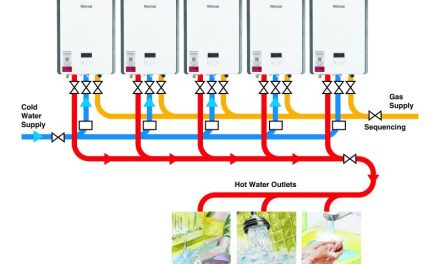 With time running out until the 5th December deadline, now is the moment for qualifying organisations to prepare for ESOS, the Energy Savings Opportunity Scheme. Axel Du Mesnil, project manager at Bureau Veritas, global leaders in testing, inspection and certification, looks at what benefits the scheme can offer.
With time running out until the 5th December deadline, now is the moment for qualifying organisations to prepare for ESOS, the Energy Savings Opportunity Scheme. Axel Du Mesnil, project manager at Bureau Veritas, global leaders in testing, inspection and certification, looks at what benefits the scheme can offer.
Much has already been written about the Energy Savings Opportunity Scheme (ESOS); a mandatory scheme which requires all companies with more than 250 employees or a turnover of more than €50million to produce detailed reports on their energy use and efficiency every four years.
By the 5th December 2015, qualifying organisations must either conduct an ESOS assessment, be fully certified ISO 50001 or display a DEC – Display Energy Certificate. The reporting cycle then repeats every four years, with a new deadline in December 2019, 2023 and so on. Organisations will be required to review their total energy usage across the business, from building energy and industrial processes, to transport and utilities.
For some, the scheme has been viewed unfavourably – an inconvenience at best, a costly and time-wasting exercise at worst. Fortunately, these viewpoints remain in the minority. For the majority of qualifying organisations, ESOS has been promoted internally and externally as a genuinely exciting opportunity to save costs. Whilst reporting compliance to the Environment Agency is, of course, the underlying reason for measuring total energy consumption; the process can also identify cost-effective energy efficiency recommendations. In fact, implementation of the measures identified through ESOS could help to deliver net savings of £1.9billion to British businesses between 2015 and 2030, according to the Carbon Trust.
The audit process
ESOS energy audits must be carried out or reviewed by a registered Lead Assessor (LA) and with the growing concern that there may not be enough resource available, many will choose a third party organisation such as Bureau Veritas to comply with the legislation. Even if a certain level of investment is required, it is important to consider the long term benefits of the scheme; potential savings identified from an ESOS assessment can be as high as 13.5 times the cost of the audit itself, according to the Department of Energy and Climate Change.
The reports of the audit will differ according to the different sectors and the individual company’s energy systems, but will be categorised into buildings, processes and transport. For buildings and industrial processes, organisations can expect to receive detailed recommendations with a ROI (Return on Investment) on elements such as lighting, HVAC (heating, ventilation and air conditioning) and office equipment. For transport, particularly those companies with large fleets, the findings will cover procedures and systems specifically relating their fleet activity.
The ESOS audit process is also a big step towards completing the ISO 50001 Energy Management System and we are expecting many qualifying organisations to completing this process once the initial December deadline is out of the way. With ISO 50001 in place, firms will no longer need to meet the ESOS obligations for future reporting cycles – and the benefit of using a third party compliance partners such as Bureau Veritas is again highlighted in this step process.
Cost-cutting measures
Once the audit is completed, the cost-saving potential becomes clearer. For buildings and industrial processes, the ESOS audit will deliver a detailed report with description of each individual recommendation to save energy, the cost of that action and the profit expected. It could be the replacement of a heating or air conditioning unit with suggestions on the new purchase, it could also involve changes to the way in which that unit it used, or it could be an improvement on the way that unit consumption is controlled and measured, for example.
The audit findings would also include benchmarking of energy usage and energy cost against similar companies, together with an analysis of carbon footprint and impact on the environment. It is a hugely valuable exercise with a number of additional benefits, including sustainability reporting and stakeholder engagement.
For transport processes, recommendations could include modifying the way in which routes are planned and controlled, as well as which roads to use, the method of refuelling, the potential implementation of a vehicle tracking system or an analysis of the training provided to driver. The detailed report can also include improvements in the way in which vehicles are maintained, refurbished, disposed or replaced.
The Above examples make it easier to see how the ESOS audit could deliver opportunities to cut costs – often with very short payback periods. With all of the relevant data to support proposed actions and a step-by-step guide on how to submit your notification of compliance, not to mention communication with the Lead Assessor right up until the notification has been submitted, a Bureau Veritas ESOS audit provides all the information needed to be compliant – and to cut costs through reduced energy consumption. It’s a win-win situation for any organisation.
BOX OUT: The Potential Savings
Bureau Veritas has already undertaken a number of audits with significant short-term savings that cover the cost of the audit within a year, including one for an automotive client which identified potential savings of 9% (£36,000) on its £400,000 annual energy cost without any further investment.
Case Study 1: Commercial Building
- Annual energy cost over £60,000
- Potential savings identified with a one year payback were 25% (or £15,000)
Case Study 2: Automotive Industry
- Annual energy cost over £400,000
- Total potential savings identified 15%
- Of which saving without further investment was 9% (or £36,000) and savings with a one year payback 2%
Case Study 3: Industrial Appliance Company
- Annual energy cost over £140,000
- Potential savings identified were 12%
- Of which saving without further investment was 6% (or £9,000) and savings with a two year payback 12%
Case Study 4: Food Processing Industry
- Annual energy cost over £500,000
- Potential savings identified were 8%
- Of which saving without further investment was 1%, savings with a one year payback were 3% (or £15,000) and savings with a four year payback were 6%
Visit www.bureauveritas.co.uk for more information.




